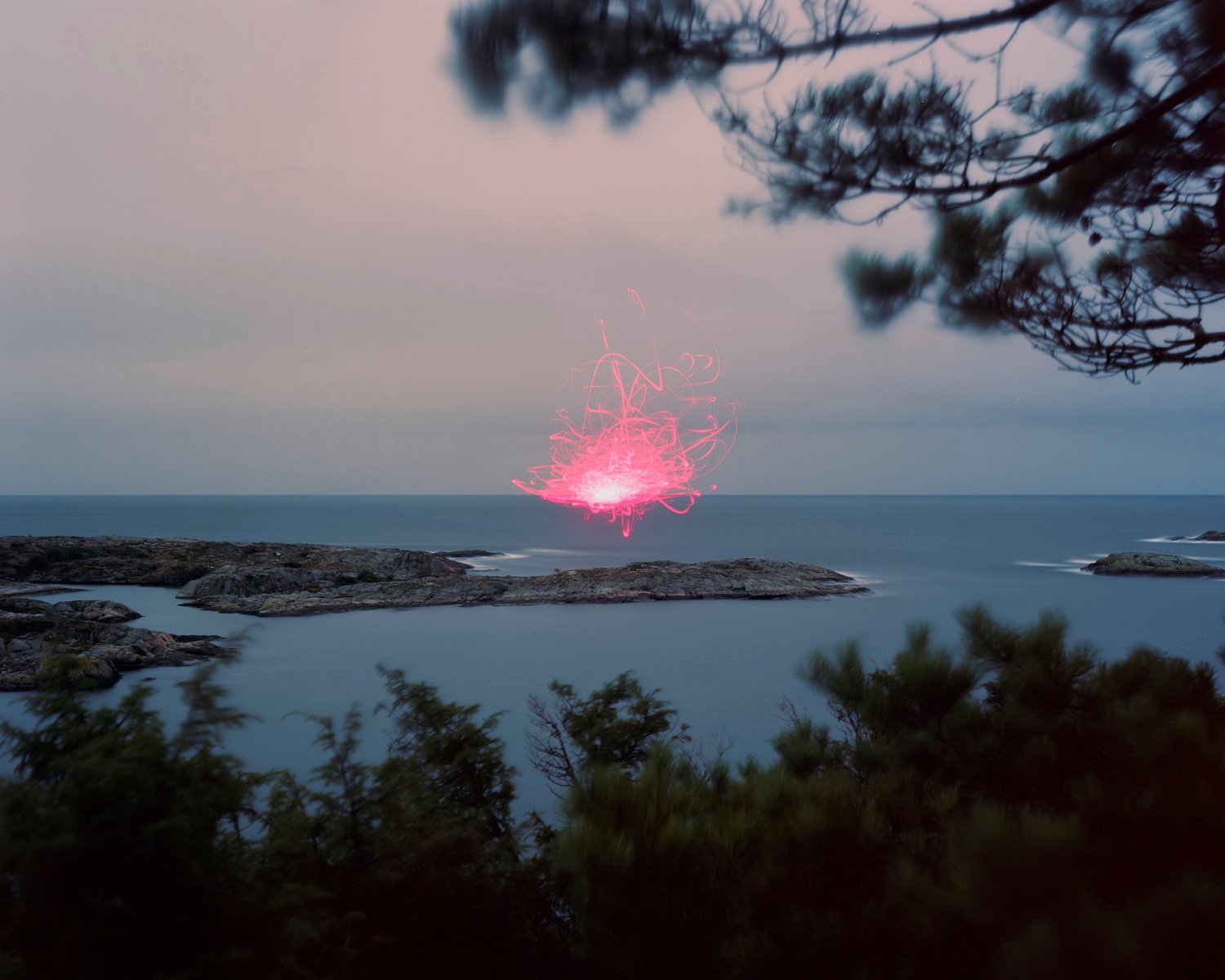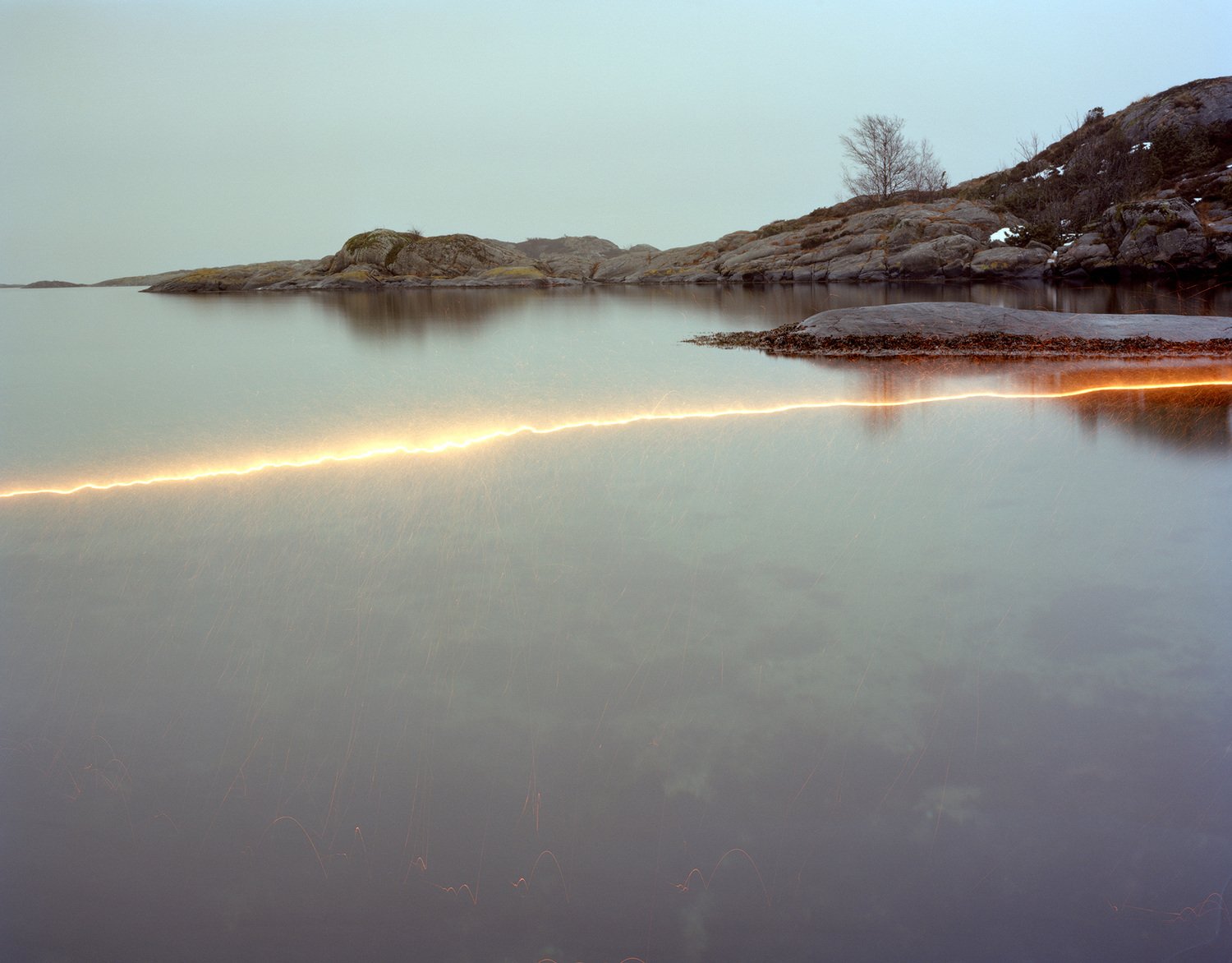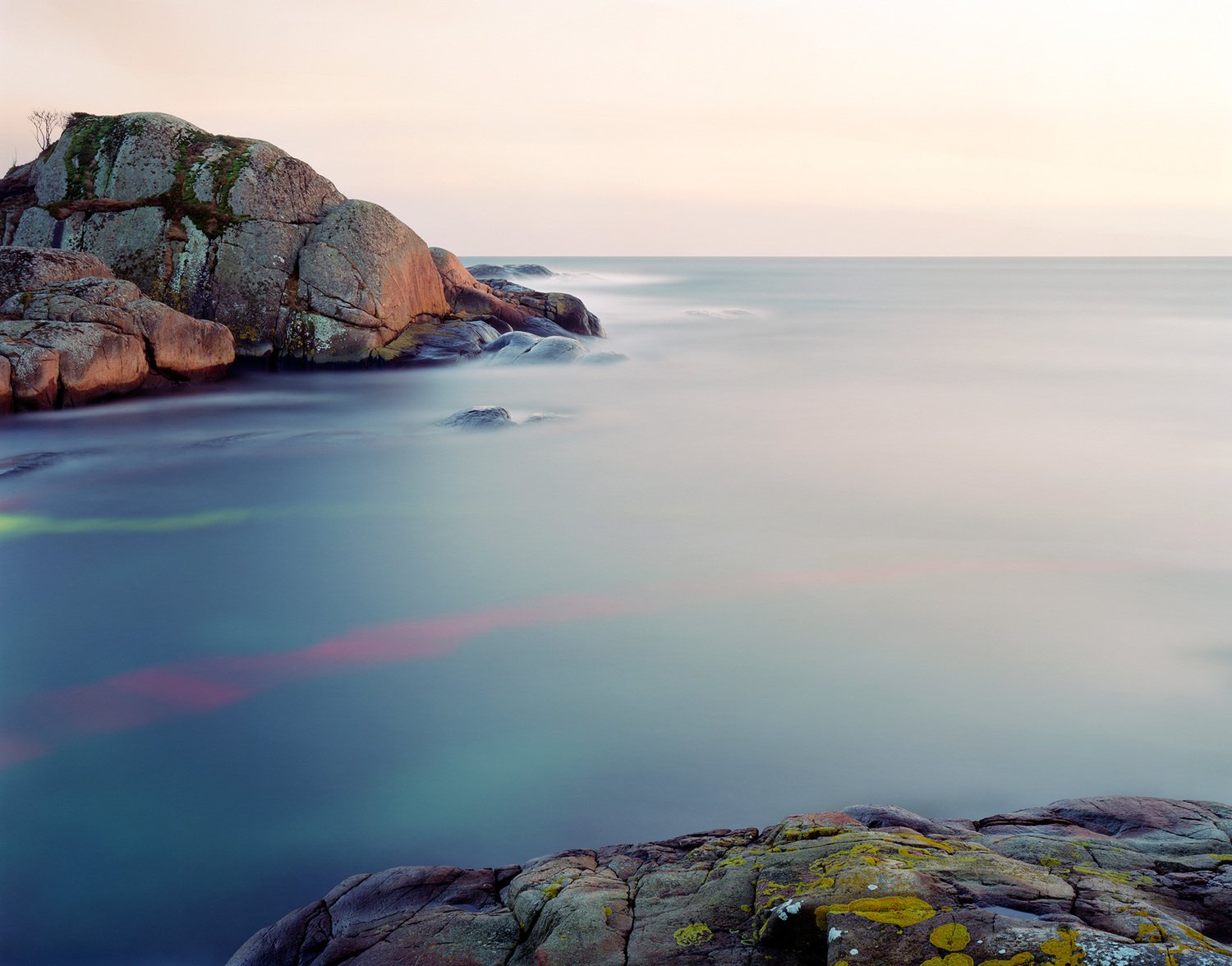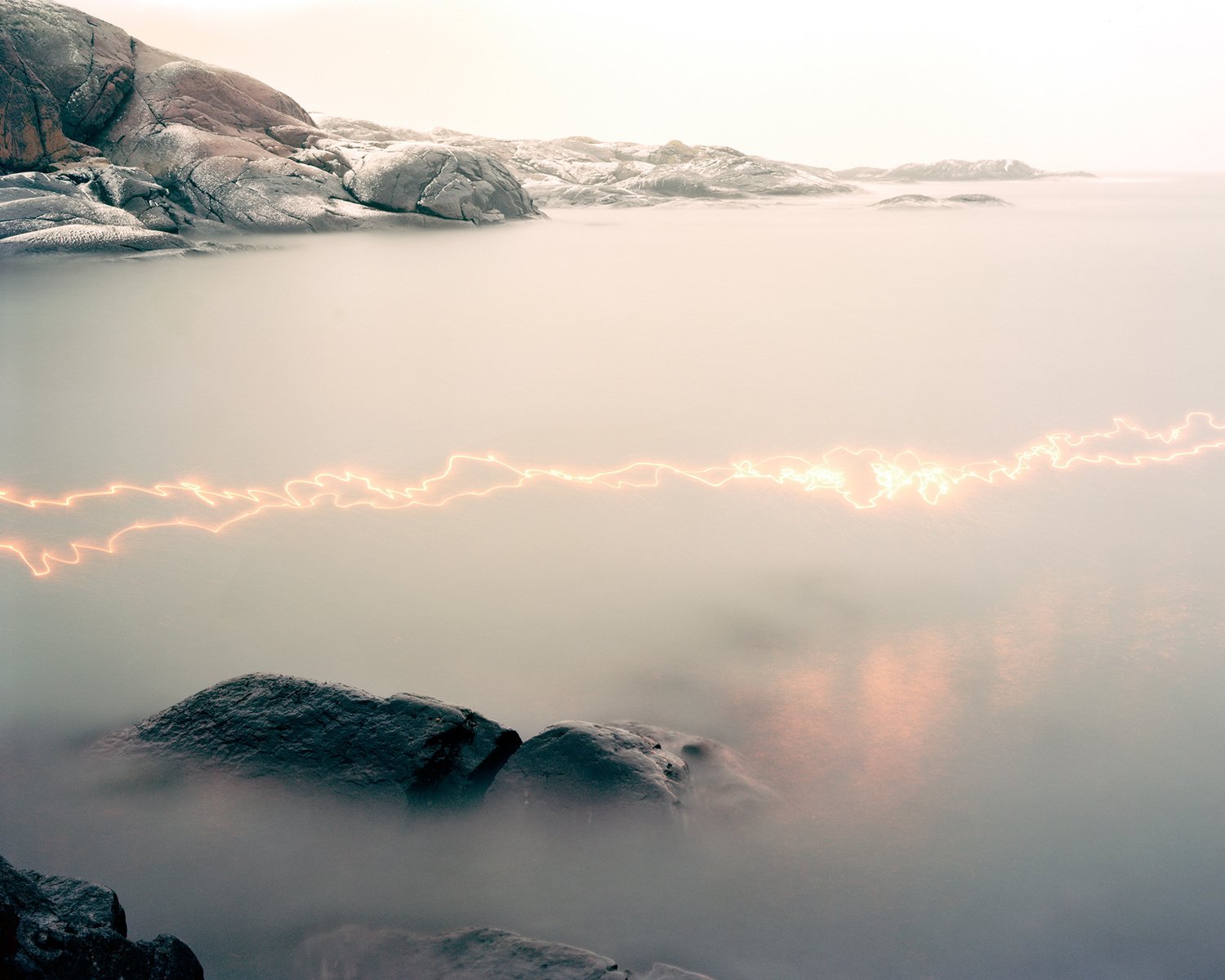Trespassing // Ole Brodersen
Ole Brodersen is a Norwegian art photographer who works with staged landscapes. His most known series “Trespassing” explores encounters between man and nature, and is produced in the island society Lyngør where he grew up as 12th generation. He is strongly affiliated to this place and the maritime elements here dominate his motifs. His father is a sail maker, his grandfather was a sailor and he himself used to row to school.
After a brief international career as an art director, Brodersen circumnavigated the Atlantic Ocean for a year. Upon his return he made a gallery on his home island and later pursued photography through assisting the fine art photographer Dag Alveng (represented at MOMA and Metropolitan).
He is a member of Norwegian Society of Fine Art Photographers and Norwegian Visual Artist‘s Association.
“It is not down on any map; true places never are.” (Herman Melville, Moby-Dick; or, The Whale)
The forces of nature are natural phenomena always present in a landscape, beyond human control. Ole Brodersen‘s work is dedicated to unveiling this presence by exploring encounters between manmade objects and untouched nature. Brodersen grew up in Lyngør, a car-free archipelago in southern Norway. His family has been living here for 12 generations. Ole‘s father is a sail maker and his grandfather was a sailor. He rowed to school and sailed from the age of 6.
The mainland appears to him as static, firm and controllable. The ocean, on the other hand, is like an unconquered frontier of nature. Living on this threshold, you learn to be sensitive to its movement. You grow up to be constantly aware of the changes in the air and sea. High tide? Check the moorings. Heavy snowfall? Shovel snow off the boats.
Ole grew up knowing nature doesn‘t sit still. You cannot control her or fix her in place. The only way to manage her powers is to move along her tracks. Like sailors do. Lyngør has seen many sailors go out to sea, and have seen most of them come back. Ole‘s great grandfather did not.
A couple of years ago Ole circumnavigated the Atlantic Ocean in a 120 year old pilot cutter. It was mostly about the adventure, and to some extent to put him to the test. But Ole has now followed the wake of his forefathers. The experience did not necessarily mark the beginning of something, i.e. manhood, but rather a return to what he was all along. A homecoming of sorts.
“The very permanence of form is only an outline of movement.” (Henri Bergson)
Brodersen‘s photographs are site specific. He works in the area surrounding Lyngør, a huge archipelago of islands and rock formations, included in the Skjærgårdsparken National Park. The park was constituted in the 70s by the socialist government of the era. The land was expropriated from its owners, and now owned and maintained by the state. The park, with its islands and sounds, equals the size of Denmark. Ole is very proud of this park that allows for this area to remain in its original state. Skjærgård, with the nearest suitable English word “skerries”, is a very characteristic feature for Fennoscandia (and Scotland), and was shaped by glaciers that used to cover these lands.
Preparing for his recordings, Ole collects various materials such as: Styrofoam, pieces of sailcloth and rope, out of which he makes objects (of different complexity) that will populate the landscape. Most of the material is found while rummaging through his grandfathers shed or his father‘s sail loft. Out of these Ole fashions markers; i.e. floats, flags and kites. Sometimes attaching additional sparklers, LED-lights or other light sources, which help trace their trajectory through the landscape.
A large format camera is used and often long exposures that allows him to capture the movements of his markers. Ole always brings multiple markers with him. Waves, tide, wind and currents decide where the recordings will take place. At a suitable location, before composing, Ole always test-runs a few of the markers, to get a feel for the pathway of the forces. Afterwards, he has no influence on the final exposure. He deploys his markers, starts the chosen exposure and waits while it develops in front of him. The nature takes control of the markers.
Photography reveals the invisible figure of movement in every landscape. Something that is unnoticed, rather than undetectable. A useful analogy is false-color, a technique used in deep space imaging to visualize different unobservable phenomena. Images taken by telescopes are often in wavelengths invisible to the human eye, and needs to be mapped into our perceptual range. We know that these astronomical phenomena aren‘t presented the way they actually look, but otherwise they would remain undetected by us. The titles for Ole Brodersen‘s photographs read as a list of ingredients used to create thearkers. You can say the titles are in the photograph, rather than underneath them. Their function is to demystify, rather than to comment. It is not his wish for the observer to spend time solving riddles. In addition, he wants to underline the importance of the coincidences that occur during the process, how unpredicted events and using what he finds along the way leaves a mark on the final image.
The figure of movement that appears is an impersonal characteristic of a given landscape. It is a result of the weather conditions that particular day, but also of the materials being used. The entire procedure enables nature to yield a figure of movement. Invisible force is captured into a visible sign.
website: Ole Brothersen
Instagram: olebrodersen
facebook: photobrodersen
–
copyright © Ole Brodersen, all right reserved




